A WW2 naval tactics game with a bit of drama thrown in for good measure.
Type: Singleplayer
Genre: Strategy
Developer: Starni Games
Publisher: Starni Games
Release date: 25 Oct, 2019

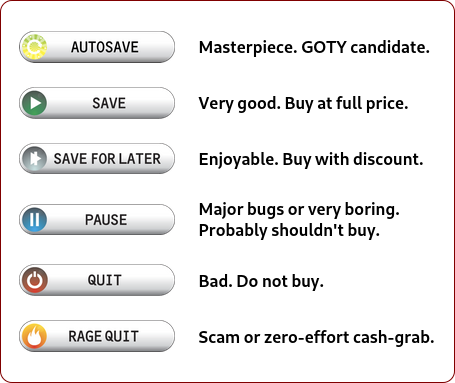
The 5-star general series of games has inspired a lot of games, Panzer Corps, Order of Battle, Tank Operations: European Campaigns, and this one, Strategic Mind: The Pacific. Unlike many of the successors to the 5-Star general series, Strategic Mind tries to inject some drama into the often very dry storytelling that these games often have, to mixed success, but it at the very least sets it apart from the rest of the pack.
Strategic Mind: The Pacific is a turn-based tactics game with a heavy emphasis on naval warfare. It’s set during World War 2, and (unsurprisingly) is focused on the fight between the US (and its allies) and Japan.
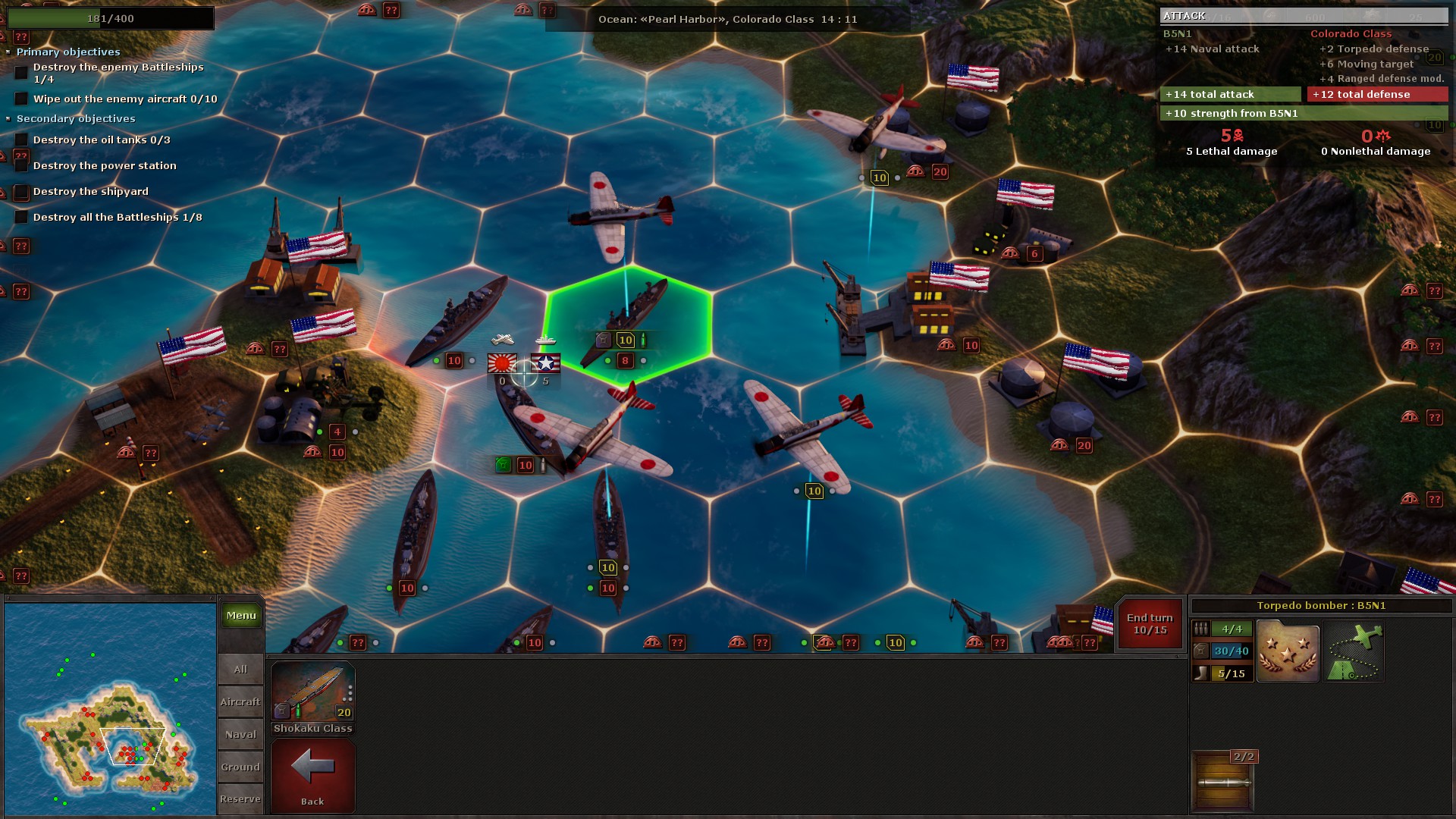
Story & Setting
In December of 1941 Japan launched a surprise attack on Perl Harbor, sinking 4 battleships, further damaging 4 and also sinking and damaging several smaller ships. And this is where the game starts. Depending on which side you’re playing as, Japan or the US, you’ll either get to play this battle yourself, or get called in to deal with the aftermath of it. The game has two campaigns, showing both sides of the conflict. Through the campaigns you’ll get to see some of the most important battles of the war, like the Battle of Midway, as well as some less well known ones.
Before and after each battle there’s a lengthy cutscene, usually involving the upper brass of each side talking to each other, although there are scenes showing other things, like the bombing of Tokyo, and these cutscenes have enough drama in them to almost be a soap opera, particularly on the Japanese side. There were a lot of rivalry between the Japanese navy and army during this time, and that’s played up here. The portrayal of the Japanese army as rather incompetent might be a bit unfair, but it makes for good drama at least, even if it’s something that’s mostly enjoyed in an ironic way.
The way the story is told is really something that sets it apart from other, similar, games. It’s rare for there to be any human drama at all in these kinds of hex-based tactics games, with the story usually being told through text between each level, and possibly a cutscene showing some stock footage, and maps with a voice explaining what’s going on. So seeing people like Nimitz and Yamamoto being portrayed as humans is fun.
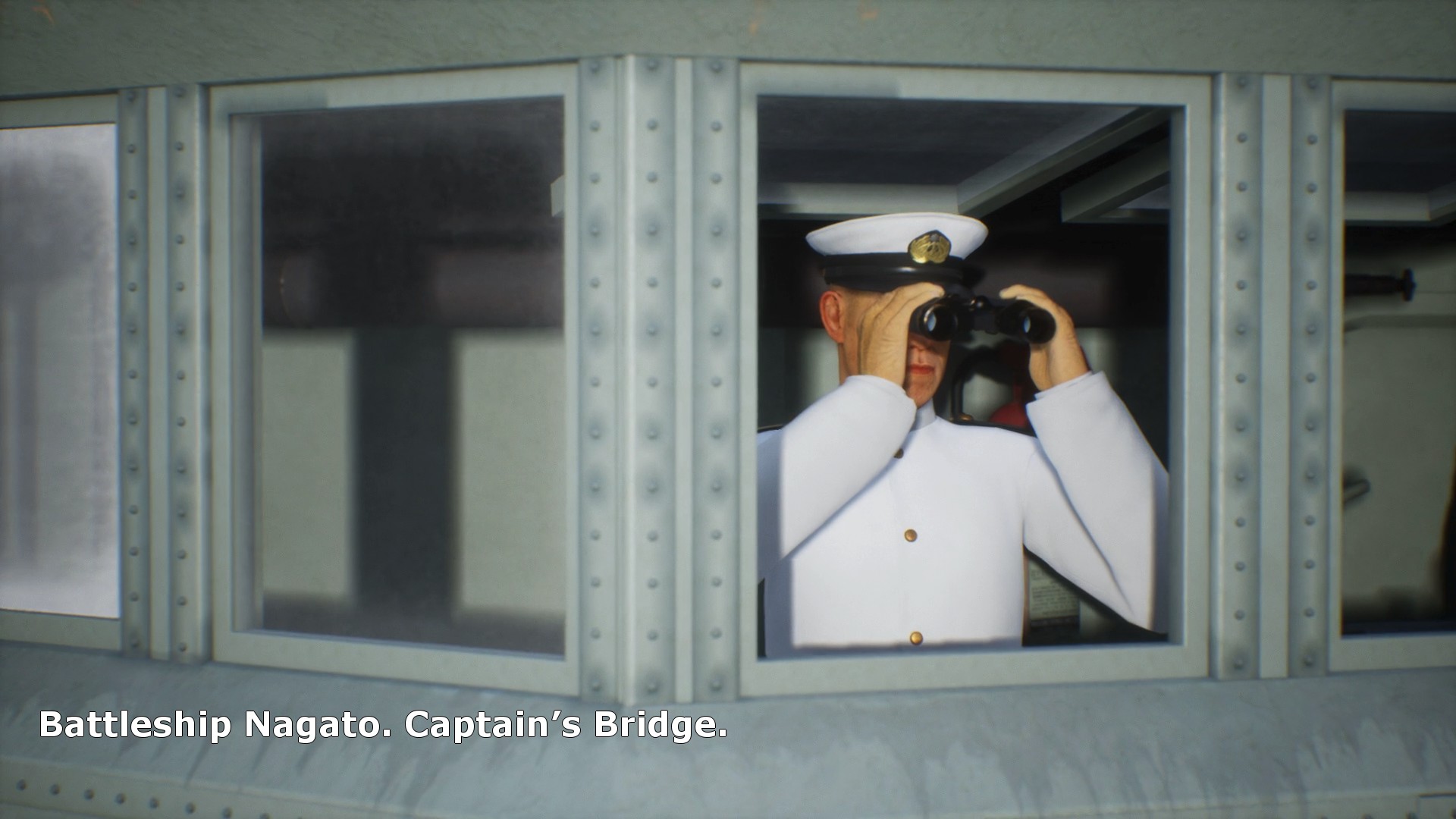
Graphics & Sound
Turn based tactics games of this type are not really known for their amazing graphics, but Strategic Mind: The Pacific actually looks quite good. While the ship models in particular might look a bit simple if you zoom in too far, from the distance you’ll view them most of the time, the units look nice, in large due to the textures being quite well made. The same can also be said for the terrain, it might not look amazing if you zoom in too much, but from the distance, you’ll view it, it looks nice, particularly the beaches.
The cutscenes are a bit more of a mixed bag. In static shots, or when you view action happening in the distance, things tend to look really good, but the animations for the human characters are stiff and robotic, and there are also some clipping issues. None of this would really be a big issue, were it not for the fact that you’ll spend a lot of time watching cutscenes in this game.
You would expect a battleship giving a broadside to sound beefy, and it does. There’s a good amount of base to the big guns here, which makes them rather satisfying to use against the enemy. The other sound effects are not bad either. The same can sadly not be said for the voice acting, which ranges from acceptable to really poor. This is particularly bad on the American side, but the Japanese also has some questionable voice lines.
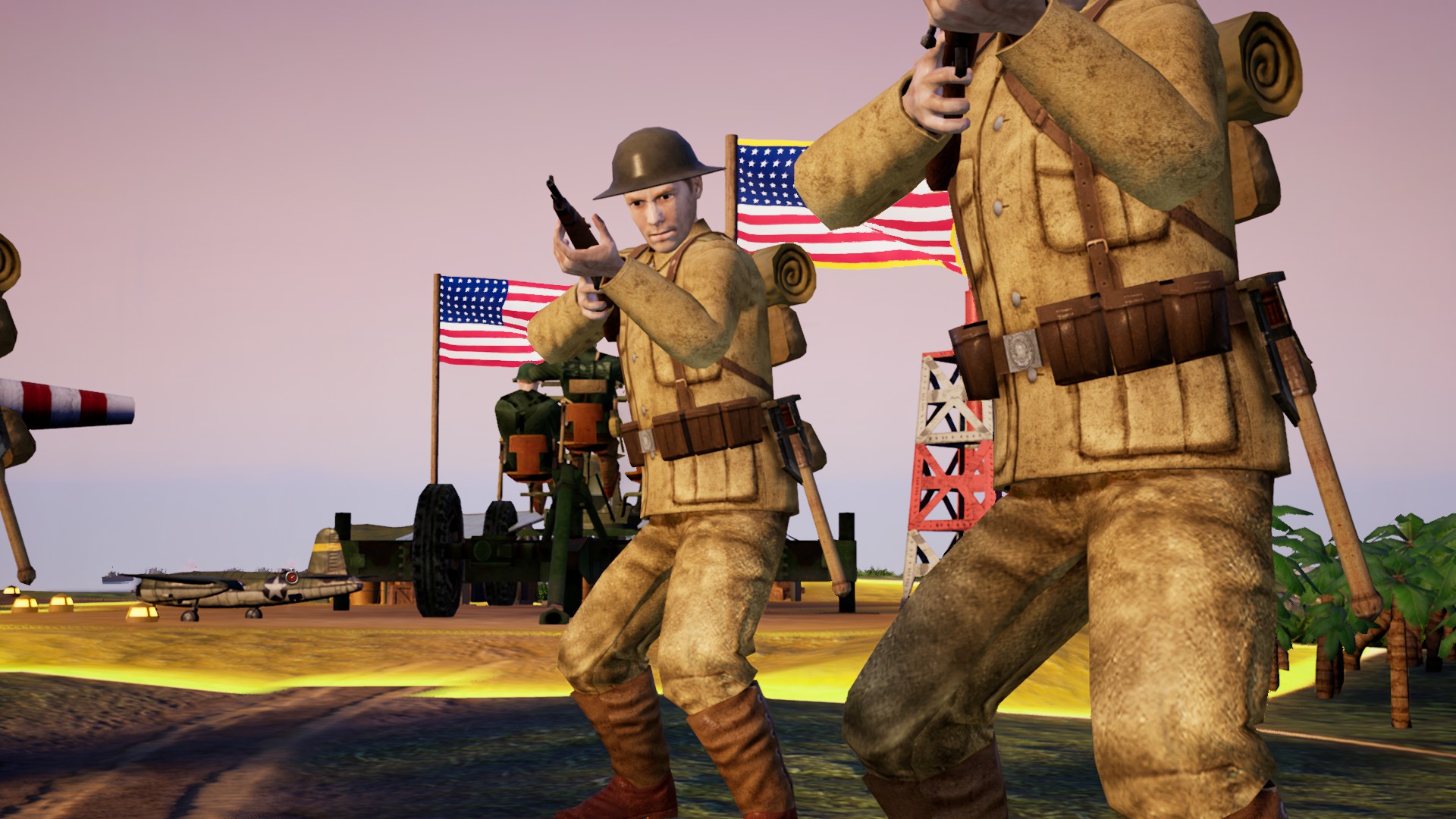
Gameplay
If you’ve ever played games like Panzer General or Panzer Corps, you’ll feel right at home in this game. Strategic Mind: The Pacific is a relatively streamlined tactical wargame, set during WW2, where unit positioning and a proper army composition is the key to victory. This game, unlike most of its peers, puts a heavy emphasis of naval combat, with huge battleships and aircraft carriers taking center stage.
Ships work a bit differently compared to ground units, and Strategic Mind: The Pacific does a good job at representing this. A big ship can take quite a beating before it sinks, and is armed with a plethora of different sized guns, that work well against different kinds of targets. Most ships are able to attack several times per turn, using its different guns to combat different kinds of foes. The ships also have several different subsystems that can be damaged individually, including the different guns, engine and so on, and some guns might not even be able to harm certain parts of some ships, the smaller guns of a destroyer will just plink off the thick hull of a battleship, but they can still damage other parts of the ship if it hits them.
If regular ships were all this game had, then Battleships would reign supreme, but luckily there are other units that can threaten them. Submarines are can cripple a battleship quite easily, but destroyers are capable of reliably take those out, and bombers are also a major threat, but fighter planes (and to a slightly lesser degree, destroyers) can take those out. So you really need to make a balanced fleet, or else you run the risk of losing to just a few enemy units of the wrong type.
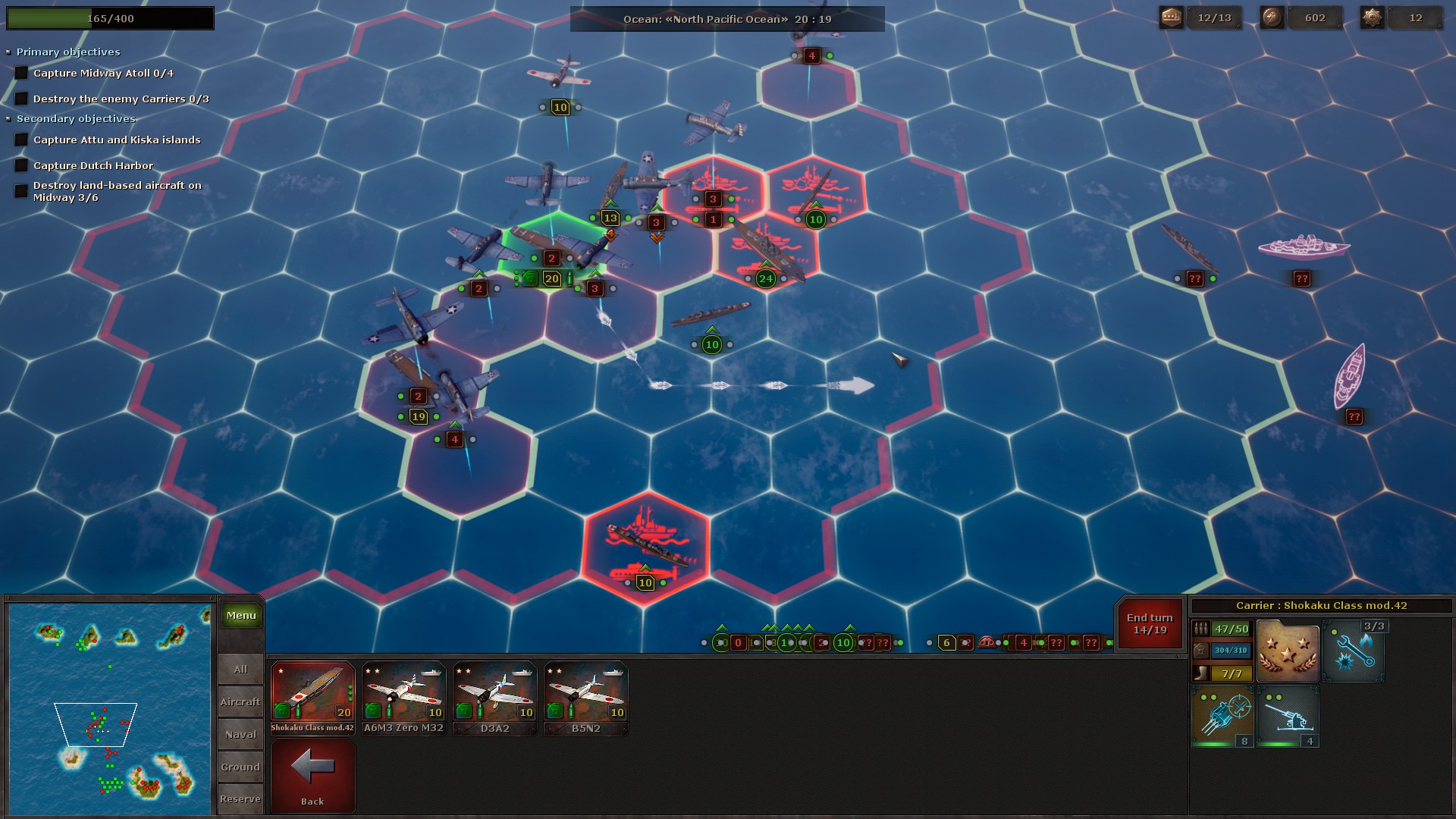
At the end of the day, your ships are still meant to be in service of your ground forces. Most objectives will be on land, and you need to take and hold valuable locations, like harbours, fuel depots and such, which your ships can’t get to. So getting your troops safely across the sea, and making sure that they don’t face too harsh opposition once they are on land is a key part of the game. Land combat is not quite as fleshed out here as naval combat, with comparatively few units, but there’s enough here to give a good representation of what was used in the pacific theatre. And just because ships can’t go up on land does not mean that they can’t support the troops there. The large guns that ships have can be used to shell enemy troops, softening them up or destroying them outright.
Strategic Mind: The Pacific has two campaigns with (I think, I did not count) 9 levels each. This might not sound like much, but these are big levels, that can easily take over an hour each. Each level has a few main objectives, as well as optional side-objectives. These side objectives can be risky to do, as losing units is painful, but the rewards make them worth undertaking in most cases. Between levels you can buy new units, upgrade existing units, as well as buy strategic powers that you can use in battle. These powers include being able to call in scout planes and bombers, letting a unit fire an extra time, and so on, and during the levels you’ve got a pool of points you can spend to use these powers, which refills a bit each turn.
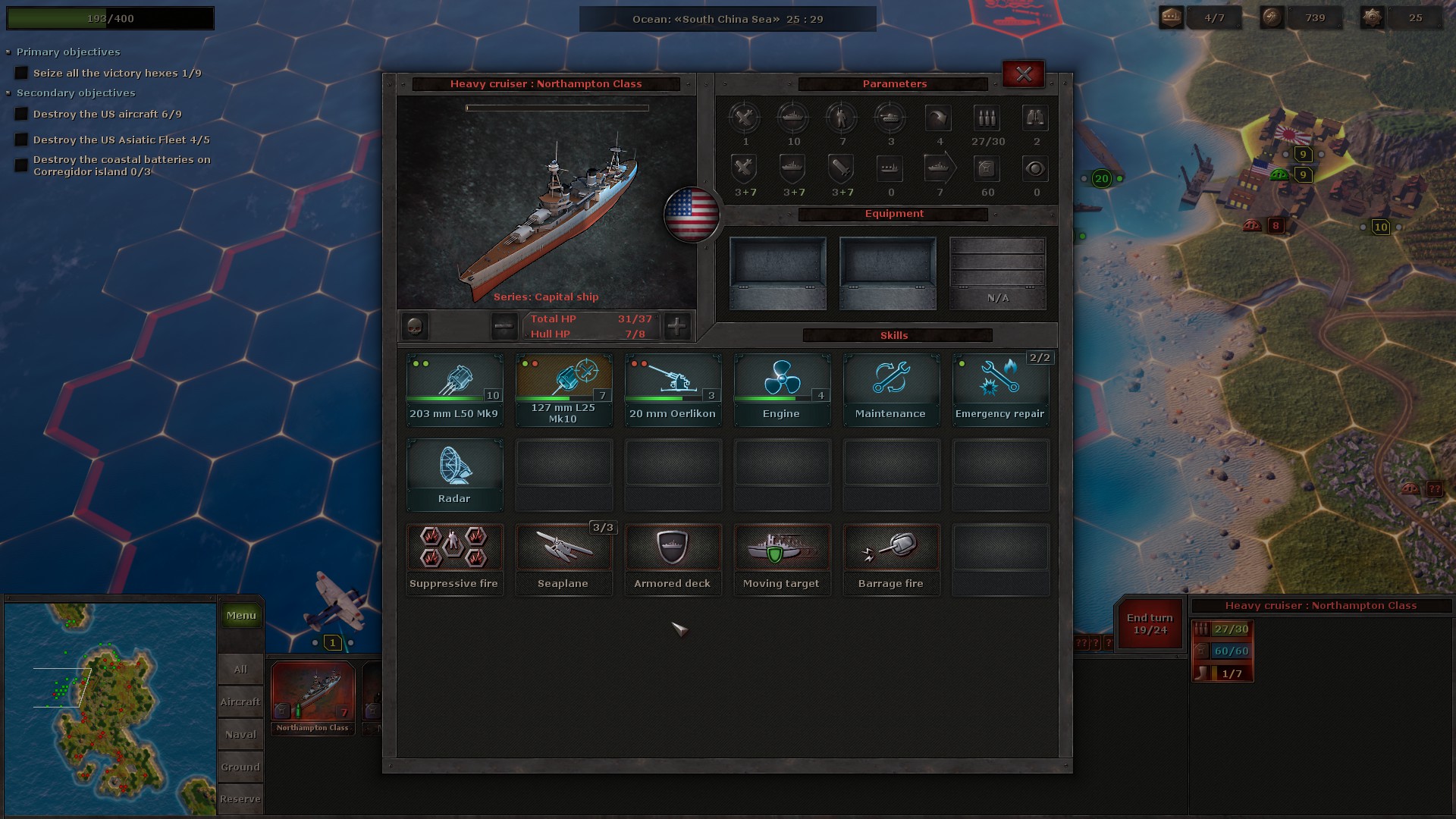
Closing Thoughts
Strategic Mind: The Pacific is a pretty good hex-based tactics game. The lengthy cutscenes and heavier emphasis on telling a story make it feel quite different from games like Panzer Corps, even if the gameplay is somewhat similar. It’s also quite challenging. I’m no strategy game novice, and I struggled a bit with some levels in this game, even after lowering the difficulty a bit. If this is a good or a bad thing depends on your preferences, but don’t expect this one to be a cakewalk.
I experienced a few bugs while playing the game. There were some minor audio issues, with some sounds not playing, or sound overlapping, sometimes it would take a few moments for a spotted enemy to appear, and I had an issue with the lighting on the screens between levels, with them being very dark. These were not particularly serious bugs, but a bit annoying nonetheless. A more serious issue has to do with some of the level design. Enemy placement could sometimes feel a bit spammy, with a lot of the same unit type being placed in a small area, particularly aircrafts. This makes logical sense, after all if you’re attacking an airfield or a carrier group, you would end up facing a swarm of airplanes, but it can be more annoying than fun when you suddenly have 12 units of aircrafts right on top of you. It would be better if the level designers made their appearance a bit more staggered.
Strategic Mind: The Pacific might not be quite as tightly designed as some of its competitors, but the way it tells its story, flawed as it is with its questionable voice acting and robotic characters, does give this game its own personality, and the focus on naval battles is something we don’t usually see in games like this. It’s also a really good looking game for its genre. The game has a few rough edges, but it’s still enjoyable.




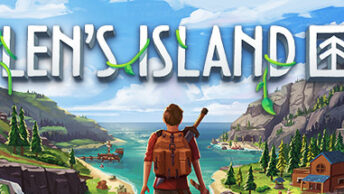

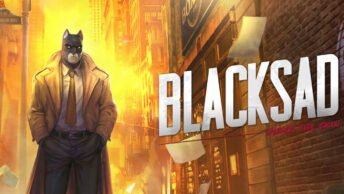
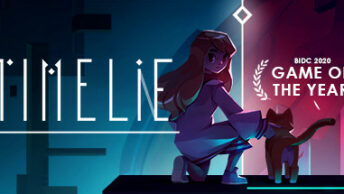



This game is pretty rough. Destroyers are the AA ships instead of cruisers. The games units should be better designed, The prop planes have afterburners instead of superchargers or turbochargers. The game was put together by gamers who couldn’t hire experts in WW II to look it over I guess. They did poor research on WW II weapons and tactics. 2 hrs in & I doubt I’ll be able to recommend the game.
I suspect they were more thorough on the European Theatre being from the Ukraine. I may give the other products a try when on sale just to see if I’m right.